When I first became a municipal horticulturist, I would have said, “A rose garden that’s low maintenance? In what world does this exist?”
This is mainly because the rose garden I took charge of was filled with issues.
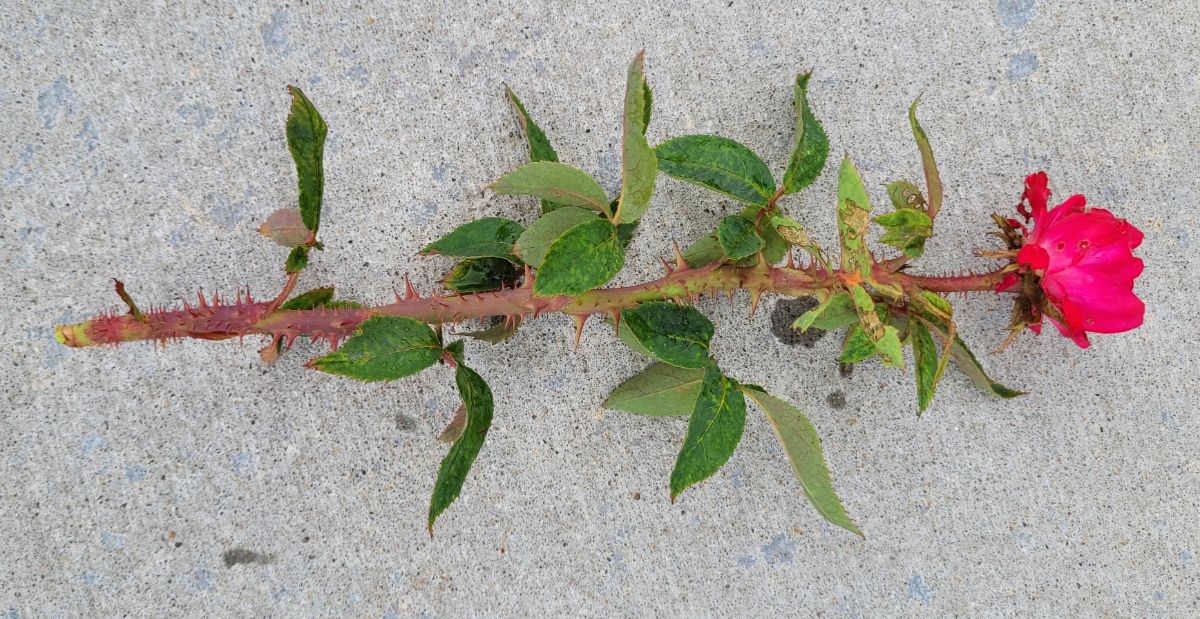
A bunch of roses were dying of rose rosette disease (though we didn’t know what it was at the time). Some of the roses were little more than wimpy twigs because the bud union had been planted six inches underground – way too deep. I was told that the roses needed to be sprayed every week with insecticide AND fungicide, and they all needed to be watered, too!
I struggled with everything that needed to be done while trying to find where every garden in the city’s park system was located.
One task I quickly jettisoned was spraying the insecticide because helpful lacewings and ladybugs would come fluttering out to die, and praying mantises would dramatically expire. I was killing more helpful insects than harmful ones. Instead, I would squash insect pests and spot-spray them when I saw them.

But all the other tasks in the rose garden kept piling up. My to-do list was like a hydra: I’d cross out one entry, and two more popped up in its place.
Ironically, it wasn’t until we dug up 75 roses with rose rosette disease that things began to turn around for me – and the rose garden.
So what did I end up learning? The moral of the story was that we can create a more low-maintenance rose garden by working with nature, and cutting out tasks that are creating more work and more problems.
Jump to:
- Step 1: Replace Lousy Roses with Carefree Roses
- Step 2: Be Willing to Experiment
- Step 3: Be Willing to Make Mistakes
- Step 4: Get to Know Your Roses to Better Care for Them
- Step 5: Choose Rose Varieties That Have Stood the Test of Time
- Step 6: Find Local Low Maintenance Roses in Your Area
- Step 7: Have Fun
- Bonus Round: Recommended Low-Maintenance Roses!
Step 1: Replace Lousy Roses with Carefree Roses
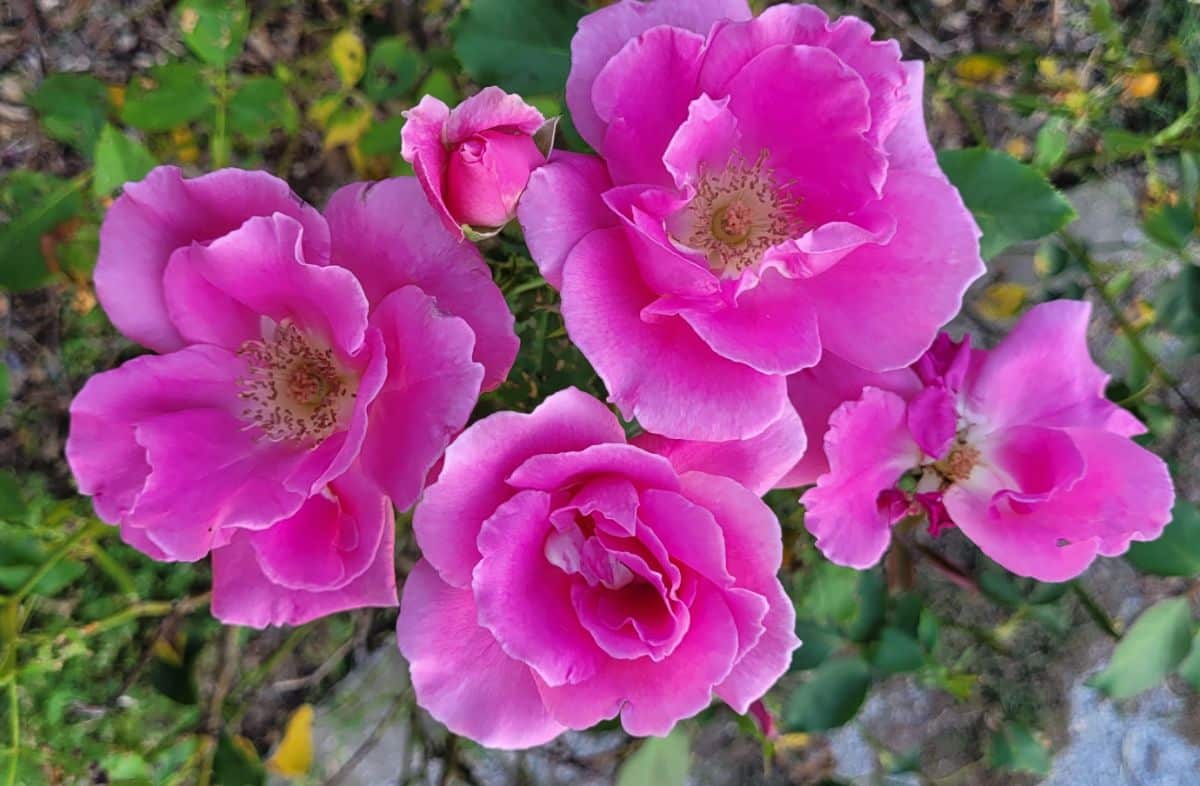
With 75 big gaps in the rose garden, I started researching roses to find out what I should fill them with. Soon I discovered that the world of roses was much larger than the wimpy hybrid teas – and I could choose hardy and vigorous roses, disease-resistant roses, and tough-as-nails roses to fill those gaps.
Soon I had large banks of rugosa roses filling out whole sections of the rose garden. They didn’t need to be sprayed with fungicide as the others did. They were vigorous, and their blossoms smelled glorious.
Step 2: Be Willing to Experiment
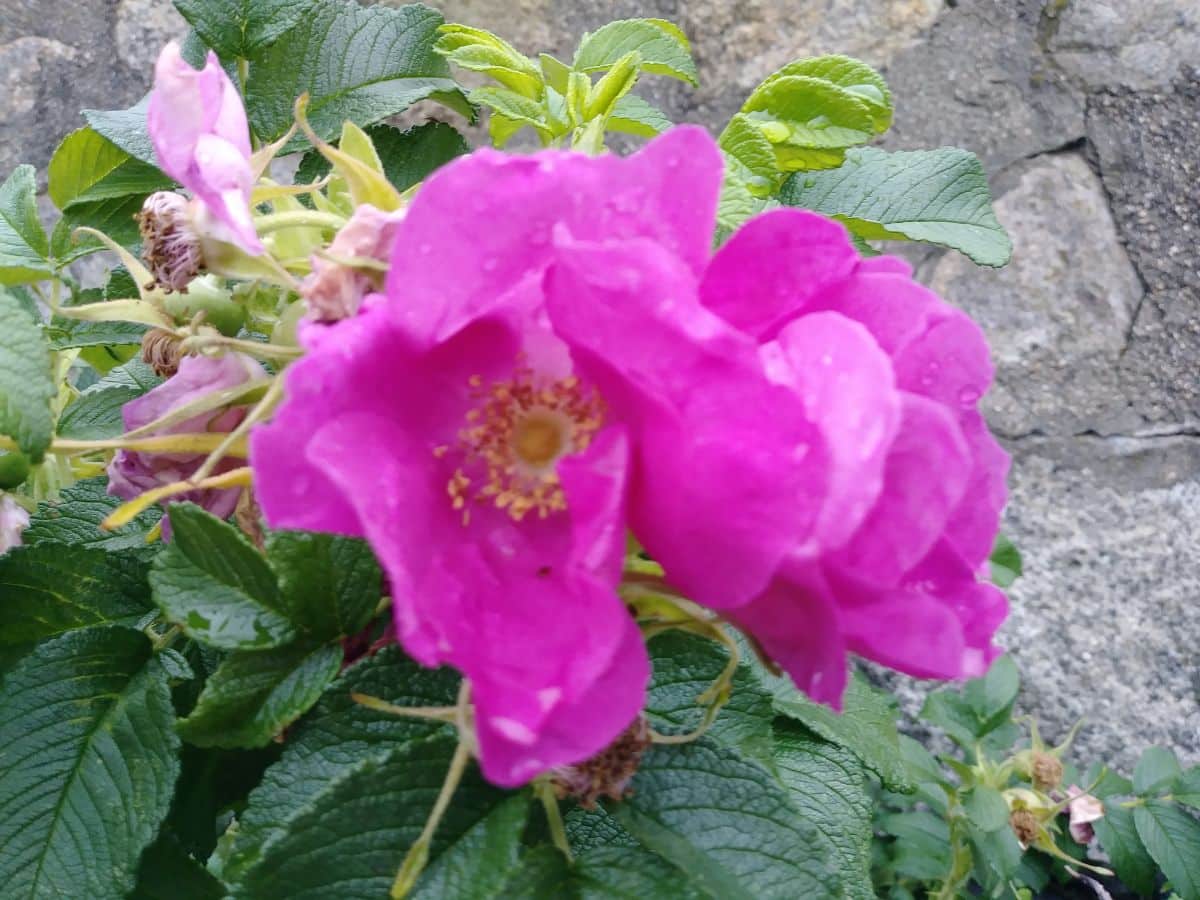
A big part in creating a low-maintenance rose garden is by finding low-maintenance roses that work for your region. But a lot of trial and error will go into this kind of work.
A rose that’s easy-going in England might sulk in the high humidity and cold winters of the American Midwest. A rose that’s at home with the brilliant heat and high winds of the prairie might languish in the foggy mist in Seattle.
Sometimes you never know until you plant them. That’s why it’s a good idea to talk to local rose growers and check out the roses that they love – the roses that will succeed in your climate and soil.
Step 3: Be Willing to Make Mistakes
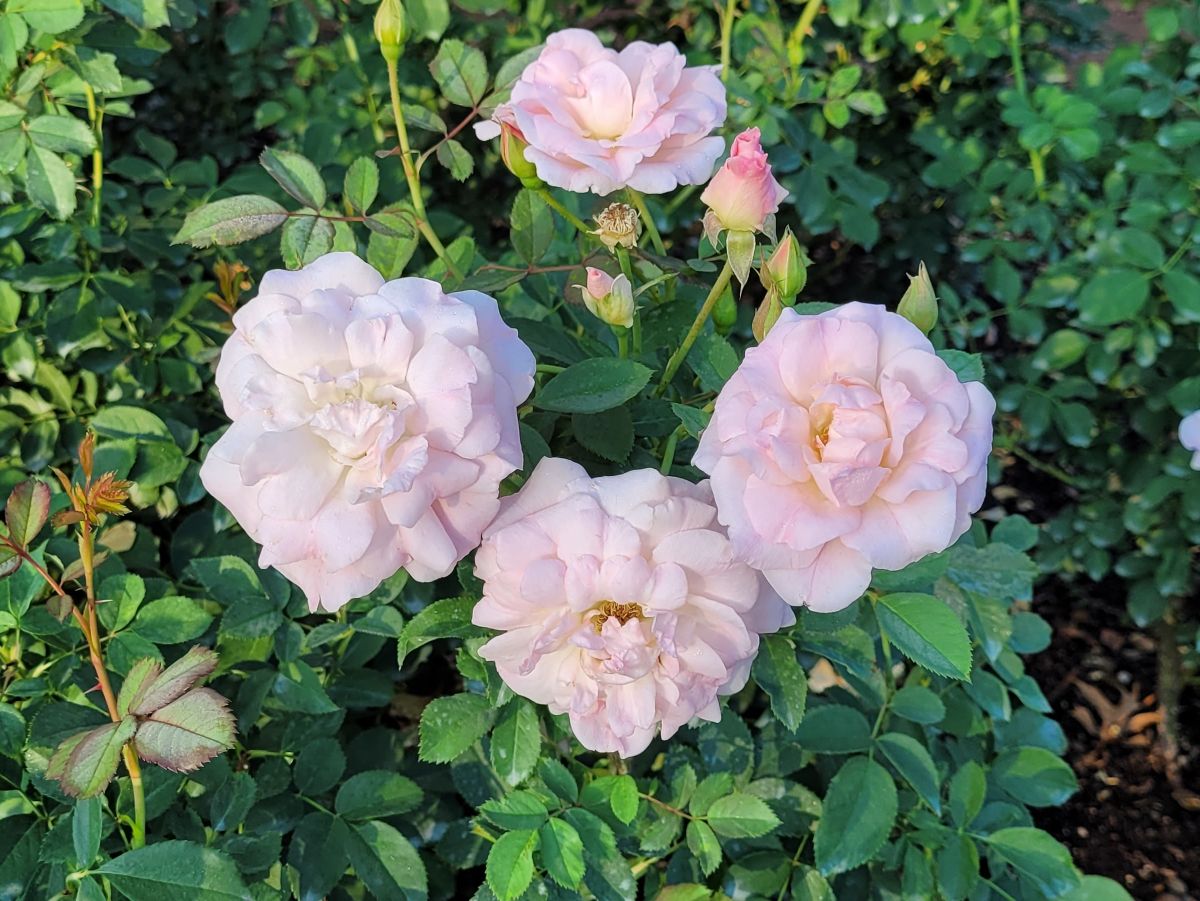
One part of succeeding at rose gardening is by being willing to try new things – which also means you are willing to make mistakes and occasionally fail.
Now, this is not exactly a feel-good truth, and marketers do not like non-feel-good truths to show up on gardening sites.
However, sometimes plants don’t cooperate – and roses are notorious for not cooperating. And sometimes we’ll goof up.
Like when I first started out, I looked at the roses and asked myself, “What’s with these little metal tags on all the roses?” These were the tags included with the rose that had its name as well as its patent information. “I won’t need these. I’ll remember their names,” I said, taking a number of tags off.
I did need those tags. I never remembered a single one of those roses’ names.
This is all a roundabout way of saying this: Go easy on yourself when you’re learning. Instead of calling it a mistake, call it a learning opportunity. Then try again.
Step 4: Get to Know Your Roses to Better Care for Them
Familiarity breeds better outcomes.
When you get to know your roses, you end up realizing little things, like how they respond to fungicide or if they need it and how they show that they’re not feeling well.
When I was a city horticulturist taking care of the municipal rose garden, I slowly came to learn how my roses acted when they were content – and when they needed an extra hand. This knowledge comes through observation and time.
Step 5: Choose Rose Varieties That Have Stood the Test of Time
Older roses are a sure bet. After all, if they’re still popular after all these years, there’s probably a reason for their success. People won’t buy roses that are a real pain to grow, after all. Well, okay, maybe some rosarians will.
But overall, antique roses are grown unattended in old cemeteries, grow wild next to abandoned houses, and can grow for decades. The Antique Rose Emporium in Tyler, Texas, has made a business of reviving old rose breeds found in the wilds of Texas and around the United States (along with some new varieties).
Step 6: Find Local Low Maintenance Roses in Your Area

The best way to find rose varieties near you that grow well in your climate? Visit local rose gardens during the most challenging weather periods – conditions optimal for blackspot, rust, or powdery mildew.
Look for roses that look cheerful even when the summer’s been hot in botanical gardens, city rose gardens, and your friends’ yards. Bonus point if they don’t use fungicides or insecticides. If the roses stay healthy with no significant signs of disease, add them to your list.
If you have a rosarian buddy or visit your local rose society, you can ask them about great local roses. They’ll likely have recommendations for you that are hidden gems that aren’t well-known – but turn out to be incredible in your garden.
Step 7: Have Fun
Because what are we here for, in this world, if we can’t enjoy ourselves? This is why we plant roses, to enjoy lavish, colorful flowers with heavenly fragrances.
That was the coolest thing about working in the municipal rose garden. It was hard work, yes, but seeing the roses blooming like gangbusters – once I figured it out – was such a good feeling.
Bonus Round: Recommended Low-Maintenance Roses!
And now it’s time for the good stuff in this article: The list of low-maintenance roses with great flowers and good fragrance and an easy-growing habit.
“Plant ‘Em and Forget ‘Em” – Hardy Roses with Disease Resistance

Knock Out roses – This rose created a much-needed sea-change in the rose industry – one toward greater disease resistance, hardiness, and roses that can take care of themselves.
The breeder who bred the Knock Out rose would run diseased leaves through his blender and spray the roses with it to weed out those that weren’t resistant. His efforts bore fruit (technically, with roses, they’d bear hips) with the Knock Out rose, which was met with great excitement – and a new crop of rosarians who now focused on disease resistance, hardiness, and basically roses that could take care of themselves.
Some rosarians refuse to include this rose in their rose gardens, but I can understand that. I’m the same way – just because it’s everywhere. I will, however, use these in landscape designs because they’re such “plant ‘em and forget ‘em” kinds of plants.
But! The Knock Out family has such a wide array of good-looking roses of all sizes, shapes, and cheery colors. It’s easy to pop a few Knock Outs into the rose garden to add a little color.
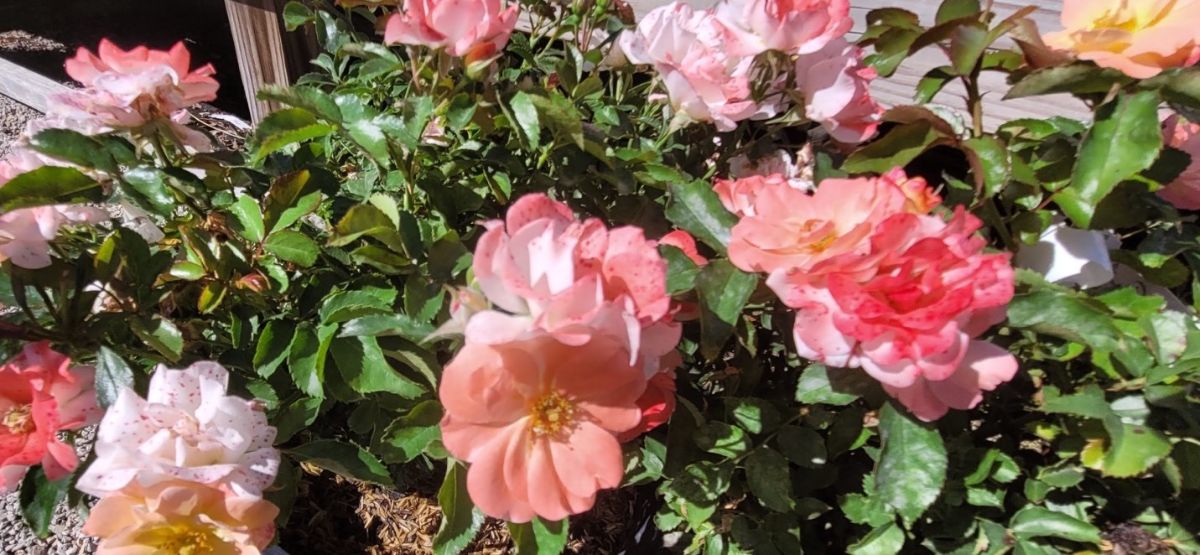
Drift – The Drift series of roses is a collection of compact, low-maintenance roses that cover themselves in a mass of colorful blossoms.
Drift roses are from the same folks who brought you the Knock Out roses. Drift roses are a cross between full-size groundcover roses and miniature roses, which gives you a little small rose that’s tough as nails, hardy as heck, but also overwhelmingly cute.
Drifts are true, low-spreading dwarf roses growing only 2 to 3 feet tall and wide. They’ll fit into your small garden and brighten it up.
At the moment, Drift roses are available in apricot, coral, lemon, peach, pink and white, medium red, and popcorn! They aren’t everblooming, but they will produce a pile of blossoms through the growing season.
They are the epitome of the phrase, “bloom where you’re planted.”
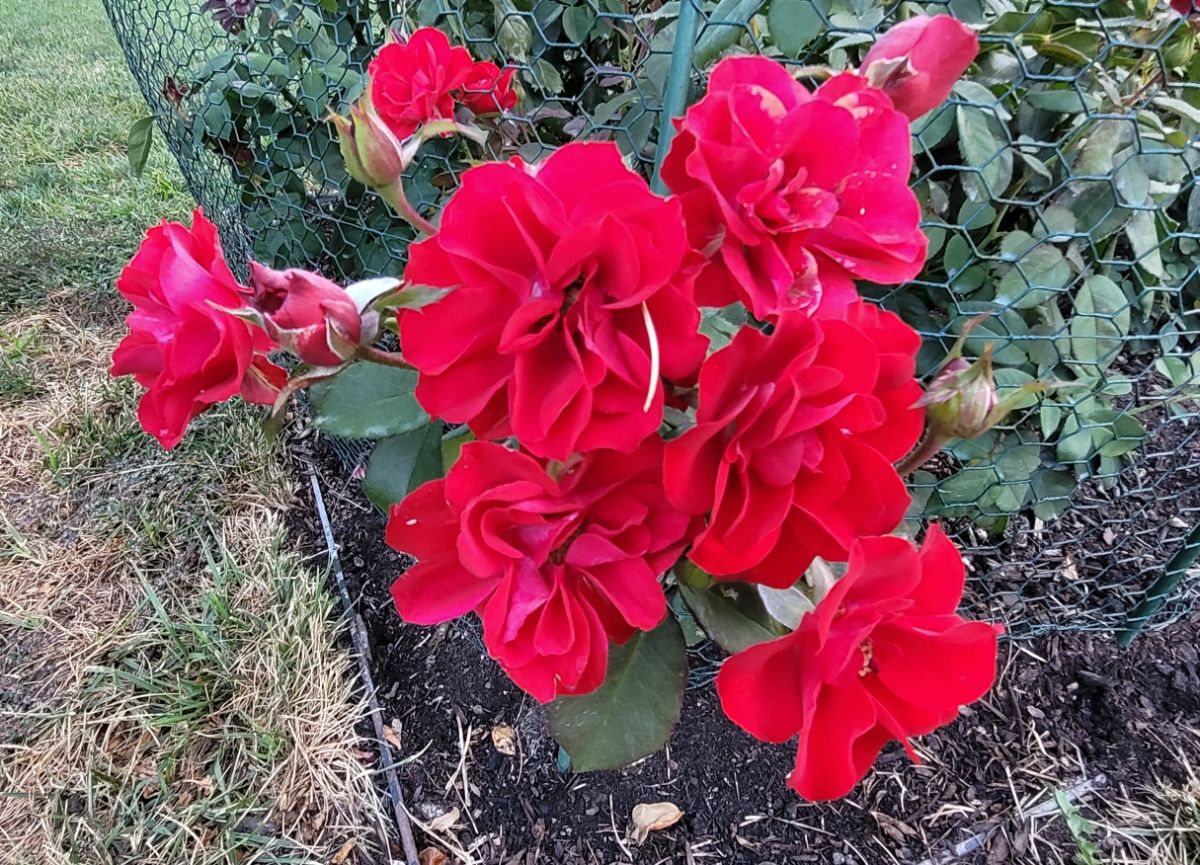
‘Europeana’ – (1963) This bears abundant, semi-double blossoms that are fragrant. Sometimes this rose will bloom so much that the dark green foliage disappears underneath all the red roses!
It makes a nice, tidy mound of flowers about 2 to 3 feet tall and wide. The foliage, when you can see it for all the red roses, emerges red and then matures to bronze-green. ‘Europeana’ is a floribunda, so it will bear its roses in clusters on multiple stems.
My friend Charles Anctil recommended these roses to me when I was trying to find new roses to replant the city rose garden. As with all his recommendations, it was a winner.
I really wish Charles was still around. He was a great guy – one of my mentors when I was getting started in horticulture in 1993.
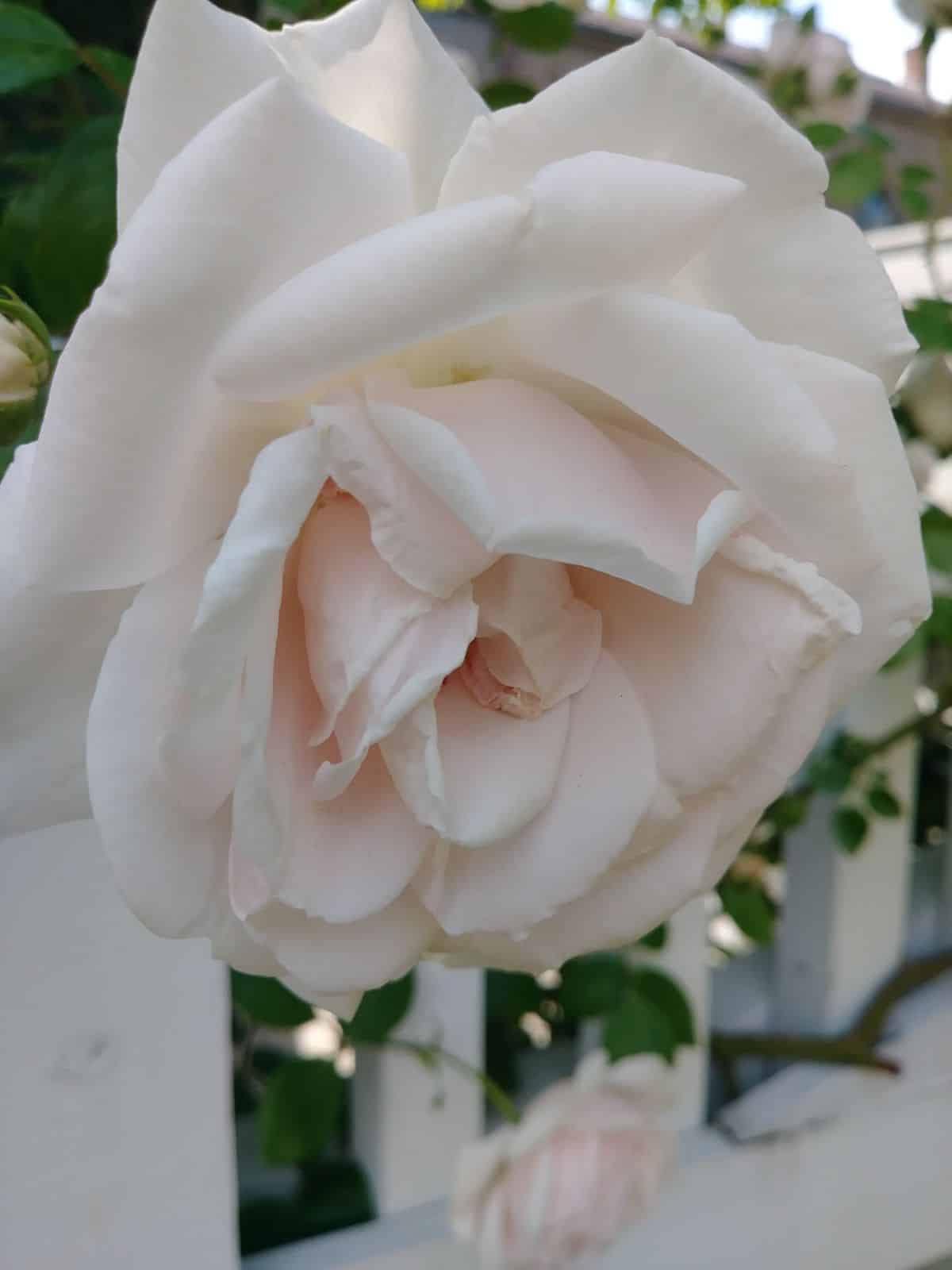
‘New Dawn’ – (1930) This climbing rose will take over the world if you let it. It bears luxuriously large, whitish-pink flowers that smell like apples and blooms in fragrant flushes through the season.
Considered by some to be a hybrid Wichurana cultivar, ‘New Dawn’ will grow arching, climbing canes with plenty of thorns (look out for those) with glossy, dark-green leaves. The canes will grow 10 to 20 feet – though when I was fighting to get these canes guided around the arches, it felt like they were about 50 feet long.
The ‘New Dawn’ climbing rose is pretty disease-resistant, which is good because I was too short to spray the uppermost canes without a ladder. They might need some protection against spring freezes, though they come roaring back once the weather warms up.
These drought-resistant roses will put up with anything. ‘New Dawn’ could probably fight off a full-grown bear if given the opportunity. The only thing that it wasn’t able to fight was rose rosette disease, which laid my proud roses low in the dust after I left the parks department.
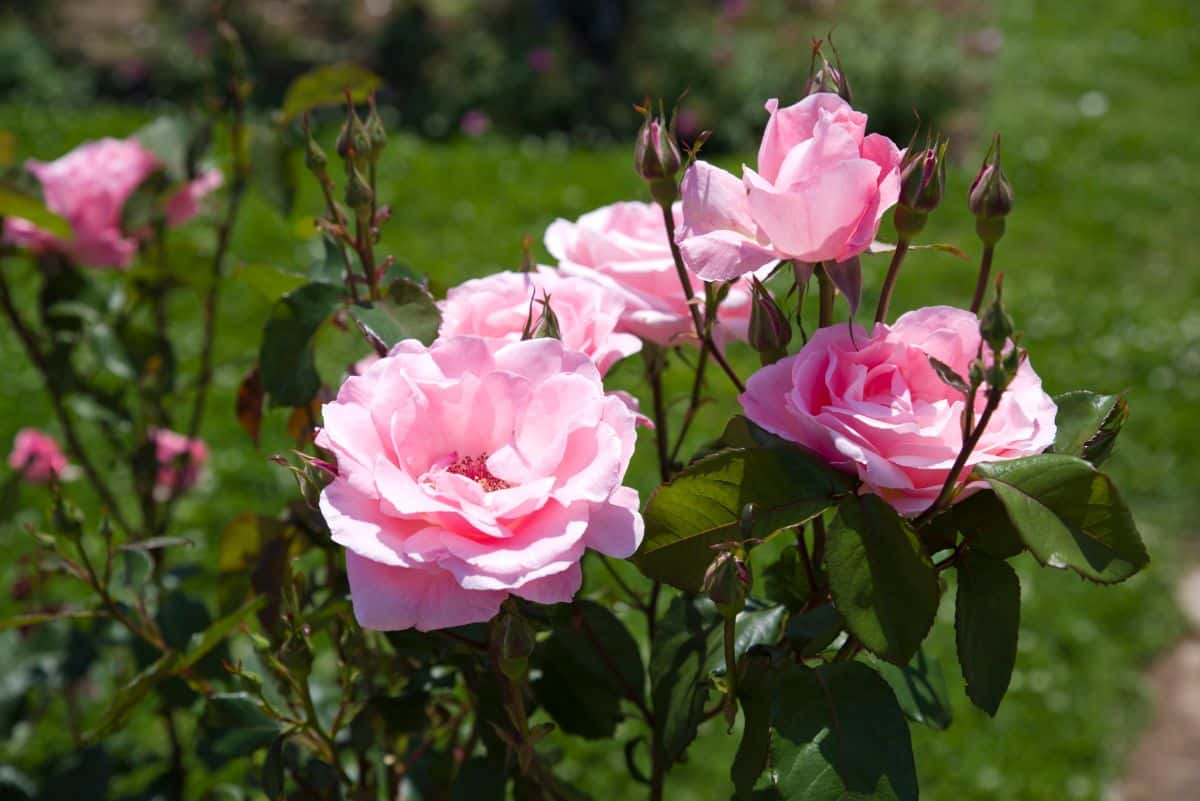
‘Queen Elizabeth’ – (1954) This silvery-pink rose was named for Queen Elizabeth II on the event of her 1952 coronation. An All-America Rose Selection winner that was also named “World’s Favorite Rose,” it has long been a popular favorite. This rose grows up to six feet tall – occasionally up to ten feet!
The Queen Elizabeth rose created a new category of roses – the grandiflora rose, since it was too tall to be a floribunda or a hybrid tea. Grandiflora flowers are shaped like hybrid teas, but they’re borne in clusters, like floribundas. The flowers on the Queen Elizabeth rose are also very large, pink beauties, unfolding into a rose that’s four inches wide and sweetly fragrant.
Queen Elizabeth grows on straight canes with leathery, dark-green foliage that is fairly resistant to diseases. We had a number of these around the gazebo, and they looked nice.
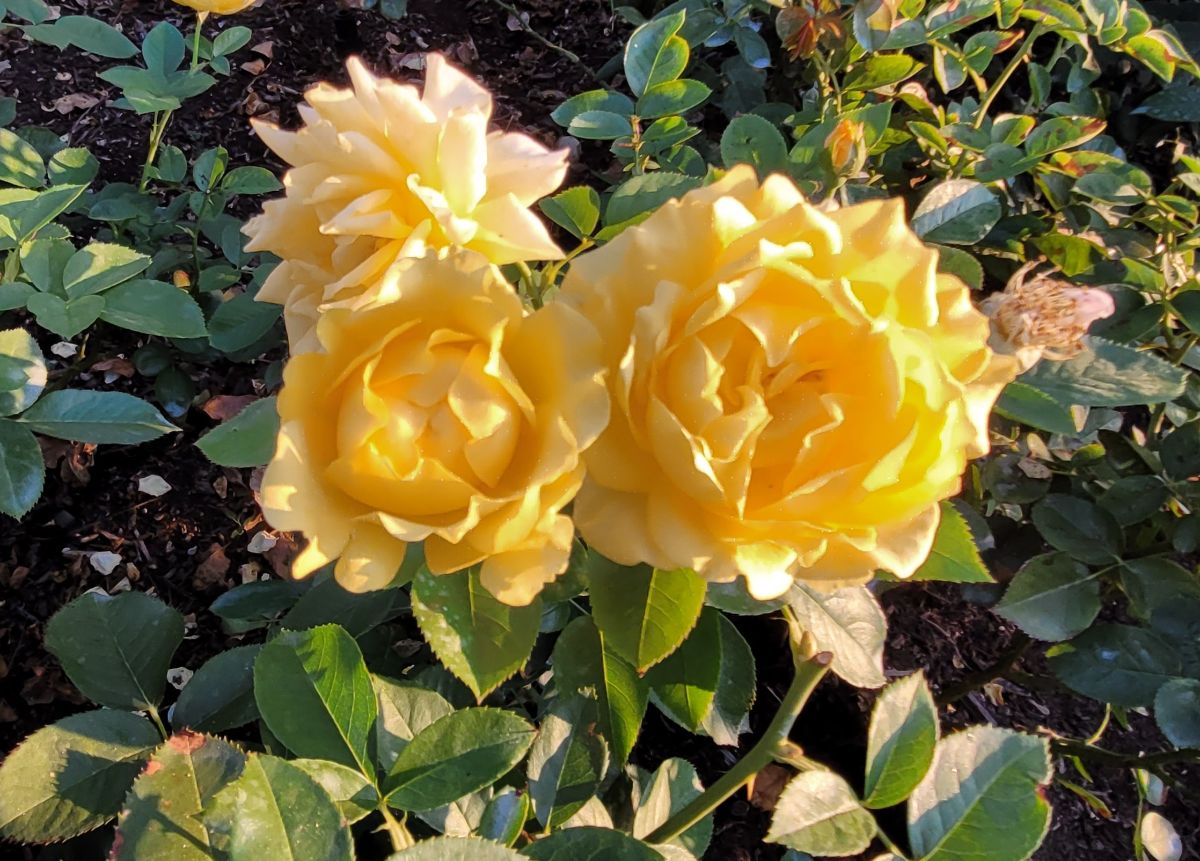
‘Julia Child’ (known as ‘Absolutely Fabulous’ in the UK) – (2004) Julia Child herself chose this rose that bears her name because its color reminded her of butter. A good choice!
This floribunda with her buttery-yellow blossoms smells like licorice candy and sports great disease resistance.
What really caught my eye was that Tom Carruth was the hybridizer who created this rose. He’s created a lot of stunning roses that also have a lot of disease resistance – roses like ‘Fourth of July,’ ‘Scentimental,’ ‘Playboy,’ ‘Betty Boop,’ ‘Hot Cocoa,’ and hundreds of others.
Carruth focuses on breeding “Workhorse Roses,” with these standards:
- They bloom like crazy.
- They bloom abundantly all season.
- They have flowers with harmonious colors.
- They cleanly drop their petals when the flower’s finished.
- They have a bushy, full habit.
- They are insanely disease-resistant.
Carruth says that ‘Julia Child’ might be his best rose. He said that many roses will look different, depending on where you grow them, but ‘Julia Child’ is one of those rare roses that doesn’t have this problem. Everywhere in the world she’s planted, she always looks golden and beautiful.
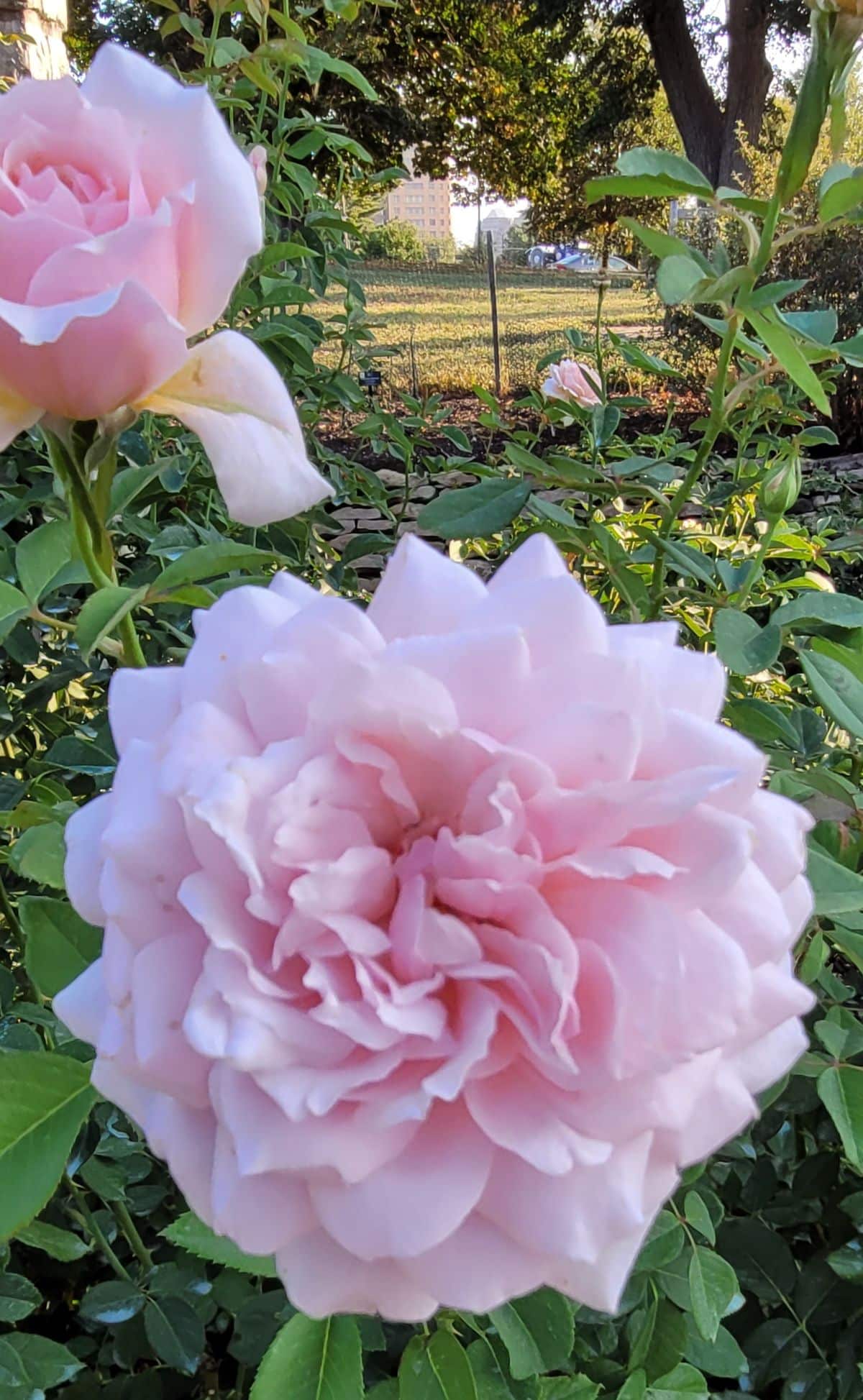
‘Quietness’ – (2003) Perfect rose that resembles the old rose ‘Souvenir de la Malmaison,’ with soft pink flowers and clean foliage. It grows to about 3 to 5 feet tall and has a long season of bloom from May to October.
This rose makes a big blossom with a sweet fragrance and a big rosebush.
‘Quietness’ was one of Dr. Griffith Buck’s last roses. He was a horticulture professor at the University of Iowa who bred roses. He had only a shoestring budget to do research and hybridize roses and geraniums – and definitely no budget to spray his roses. So, logically, he bred for disease resistance and hardiness.
He’d breed the roses, then stick them out in a windy Iowa field and see if they would survive. His roses are extremely cold-hardy and disease-resistant. The rose ‘Quietness’ is no exception.
This rose was named ‘Quietness’ for how everything was so quiet the morning after 9/11 – a beautiful tribute.

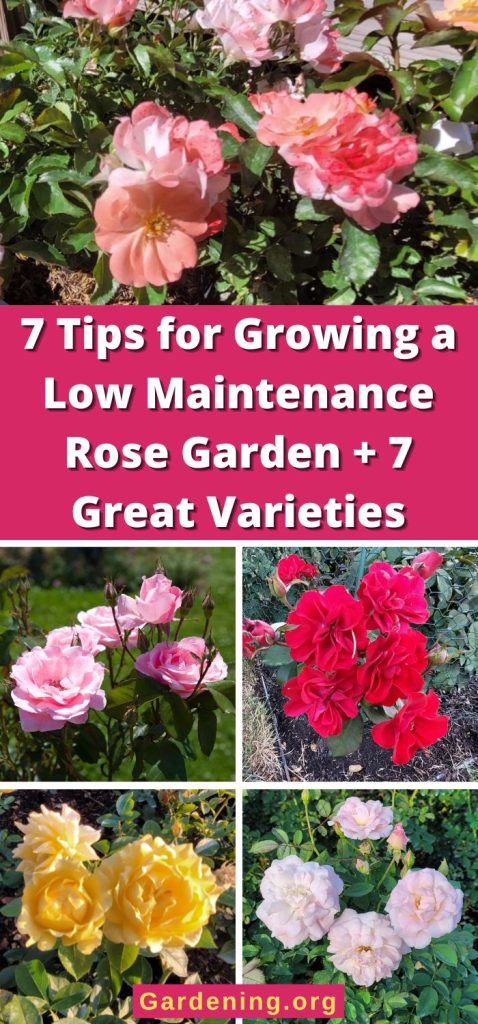
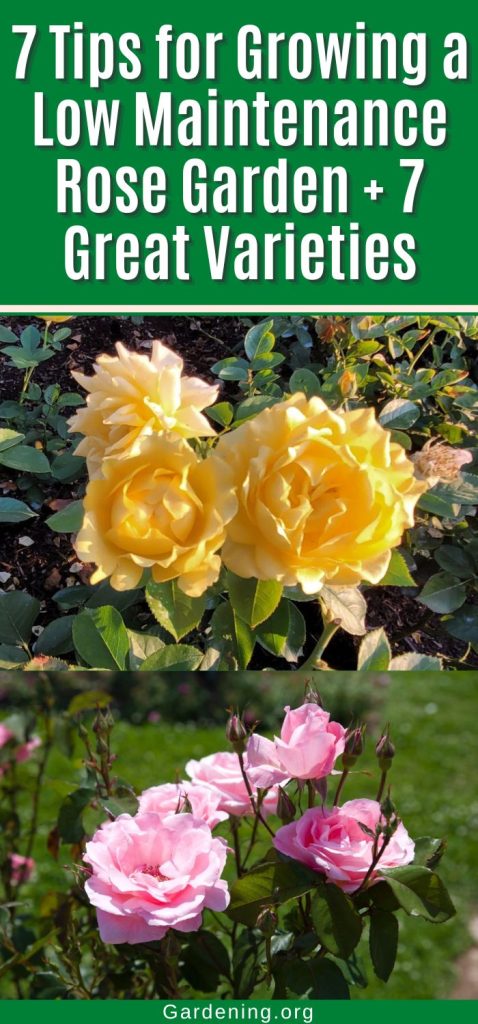
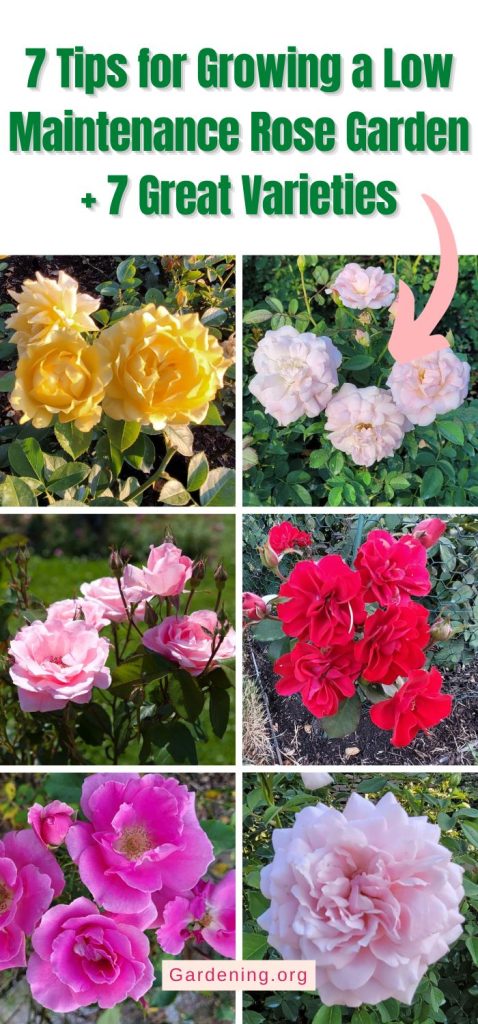


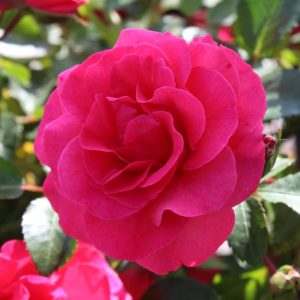
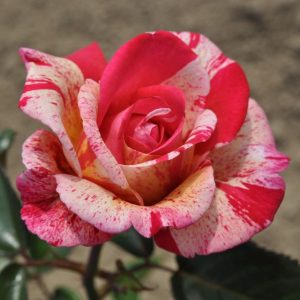

Colleen Ferguson
Planted half a dozen knock out roses and had to rip them all out since they got rose rosette. Can't plant any roses where they were since it's in the soil
Rosefiend
Hi Colleen! I hate rose rosette disease with the heat of a million fiery suns.
I will be adding a bunch of articles about the disease in the near future, Lord willing, along with methods that can help keep the disease off your roses, and ways to save a rose that's newly infected. Hopefully the articles will help, if you decide to put in roses again in the future.